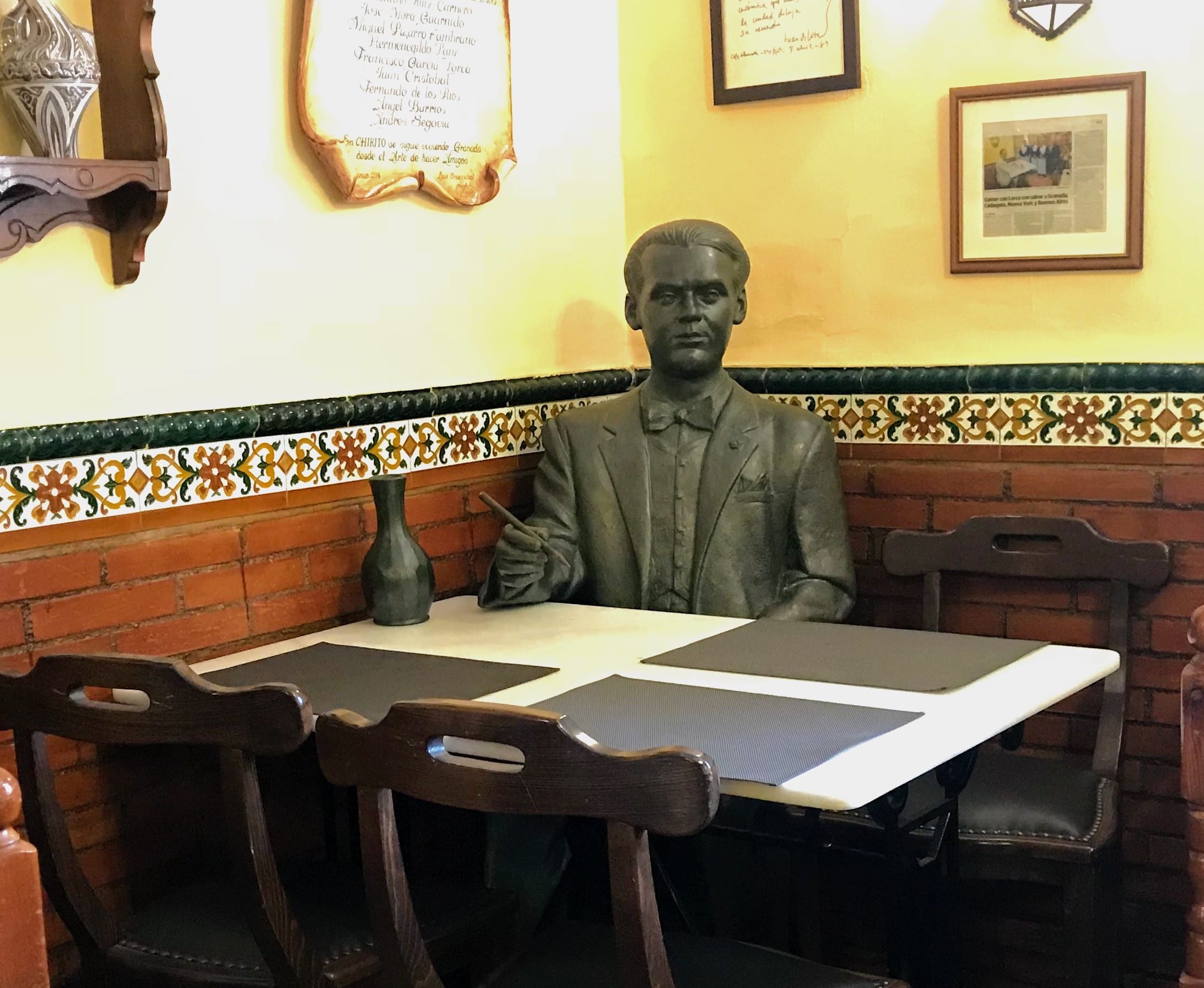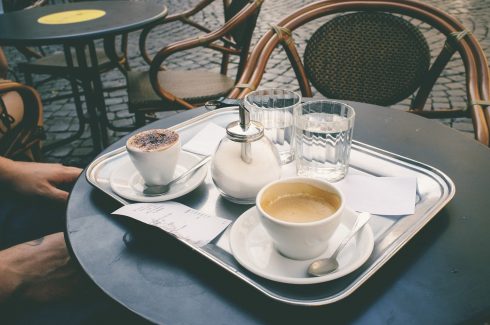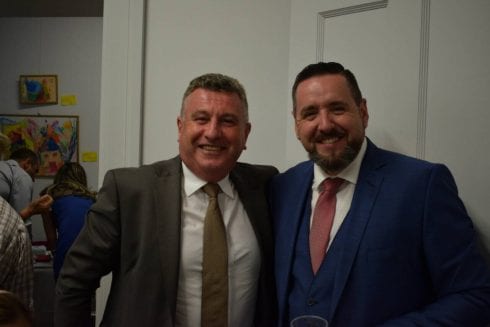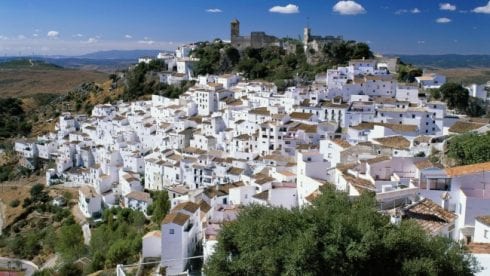I FELL in love with Federico Garcia Lorca when I was 17, sitting in a circle on a dirty school carpet with my Spanish Literature class reading La Casa de Bernarda Alba. I found myself in a world vastly progressive for its time of writing.

There’s a reason why Lorca’s name has gone down in history as one of Spain’s best poets. The genius behind great literary classics like La Casa de Bernarda Alba and Bodas de Sangre constructed unforgettably descriptive, avant-garde works that still resonate with readers today.
It’s 100 years since Lorca published his first work, Impresiones y Paisajes, his only prose contribution. More than a diary of his travels, the book is a social commentary on politics and aesthetics.
This year would also have been the poet’s 120th birthday, which has given the town of Granada two reasons to declare 2018 the Year of Lorca.
Granada held a special place in the heart of the artist who once said that if he ever became famous, “half of that fame will belong to Granada, which formed me and made me what I am.” The city had a profound impact on his works, instilling his deep love for the world, introducing him to some of his closest companions, and, in the words of Lorca himself, giving him “a sympathetic understanding of those who are persecuted.”
Taking a copy of Impresiones y Paisajes as our guide, the OP ventured forth to discover how Lorca’s Granada compares to the modern provincial capital of today.
Restaurante Chikito

Lorca found some of his closest friends and fellow intellectuals in Cafe Alameda, a meeting place for discussions of the Rinconcillo tertulia (debating society) and members of Granada’s Artistic, Literary and Scientific Society. These encounters provided an outlet for Lorca’s artistic perspective and progressive conversation. It was here he met famous musicians and artists such as Manuel de Falla, connections that would form his support group for years to come.
The cafe’s name has changed, but Restaurante Chikito still upholds the spirit of the Rinconcillo. Its motto, el arte de hacer amigos – the art of making friends – is evident in the open layout of the restaurant and its cozy vibe.
Lorca is also present. His life-sized sculpture is seated at a table in the corner, pencil in hand and seemingly deep in thought. The statue was created by José Castro and unveiled in 2015 by the mayor of Granada, José Torres Hurtado, in the poet’s memory.
Lorca would be pleased to know the food is still great, but the real wow factor is being able to sit in the very room where the poet and his friends broke bread and chewed the fat over everything from the fad for Orientalism to fascism.
Huerta de San Vicente & Federico García Lorca Park
“People all over the world come here,” tour guide Francisco Ramallo told me. “It’s amazing the way people love Lorca.”
Huerta de San Vicente, Lorca’s summer home from 1926 to 1936, stands in the middle of the park dedicated to his memory. From its many balconies, the Alhambra Palace and the snow-capped peaks of the and Sierra Nevada were once were visible before the city’s taller buildings blotted out the view.

Lorca was inspired by nature and the people of Huerta de San Vicente itself. According to Ramallo, he would spend hours with the servants in the kitchen, conversing and taking notes, using their stories and perspectives in his works. The desire to get to the nitty gritty of local life was a key element in Lorca’s literary style, which combined modern thought with traditional lifestyles.
The house-museum presents a complete picture of Lorca as poet, artist and musician. His rough sketches of costumes and backdrops for performances by La Barraca, a theatre group he directed, hang on the wall, and a large grand piano sits in the corner collecting dust. In Lorca’s bedroom is the exact desk on which he wrote some of his most famous works, such as Bodas de Sangre and Yerma.
With the original furniture still in tact, from the tiled floor in Lorca’s room to the old-fashioned light switch, visitors can walk in the poet’s footsteps and beam themselves back to the past.
Centro Federico García Lorca

Dedicated to fostering a deeper understanding of Lorca and his legacy, the gift shop is a treasure trove combining collections of his works with stylised covers reflecting an artist’s understanding of how his plays have contributed to the modern world. From biographies to illustrated poems to ‘Lorca for kids,’ the shop showcases the poet’s broad appeal, regardless of generation or fashion. Unfortunately closed during our visit, the centre will reopen in September with a new season of cultural events dedicated to Lorca.
Albayzin
Lorca called it a ‘jagged oriental dream against the sky’ and the description could not be more fitting. The Albayzin is a Moorish wonderland, filled with the cries of street vendors selling their handcrafted rugs, jewelry and artisan soaps.
Every winding street bears witness to the timelessness of this narrow, undulating district which is just as Lorca describes in Impresiones y Paisajes: deeply lyrical, with beautiful building faces and luscious gardens in full bloom; and ancient, full of the smells of incense and the songs of street performers.

But beneath the Moorish romanticism lies ‘an atmosphere of infinite anguish’, as Lorca wrote, and you can still feel it today. It is ‘an atmosphere burdened with the strumming of guitars and phlegmatic cries of the gypsies…a murmur of gypsy longing’, he wrote.
Flamenco is a dance full of passion, energy, anguish and emotion, and the intensity of watching a dancer up close in the gypsy cave Zambra Maria La Canastera gave me a taste of that ‘gypsy longing’. The strained expressions of the dancers, the heavy guitar strums and the shouting accompanying the song Gitana by Manzanita is the same gypsy performance that tugged at Lorca’s heartstrings.
Lorca was such an admirer of the romancero gitano (gypsy ballads) he published a collection of poems in 1928 by that very name. And as Lorca was inspired by gypsy culture, so gypsy culture was inspired by the poet. Walking in Sacromonte, evidence of Lorca is everywhere, from a larger-than-life portrait of him in a flamenco cave to posters of upcoming homages to the artist plastered over the walls.
Lorca has left an indelible mark on society in general and the city of Granada in particular. In his brief lifetime of 38 years, he touched the lives of so many with his words. The themes he sought to represent – brotherhood, culture and freedom – are especially remembered now, during El Año de Lorca, but they will never be forgotten. They remain ingrained in Granada forever.
Click here to read more News from The Olive Press.









Thanks for a great insight to Lorca and Granada.